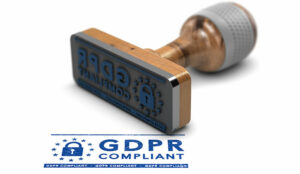Colleen McCarthy at Cyara explains how to get your chatbot GDPR ready.
From the corner office to a customer service agent’s cubicle, one word is filling the airwaves: chatbots. Chatbots are at the top of the wish list for European leaders as varied as chief digital officers, vice presidents of mobile and web capabilities, and customer experience (CX) and contact centre leaders.
When done well, chatbots offer a magic elixir of high-functioning self-service, a streamlined customer service experience, and lower costs.
Customers like chatbots because they are available on a 24/7 basis and provide faster answers and access to key resources. Agents value chatbots because they gather information and handle repetitive questions.
And contact centre leaders rejoice every time customer service is handled entirely via chatbots. While customer calls cost Western European contact centres a mean average of €4.50, web self-service costs just five to 14 cents.
Small wonder that leaders at companies like yours want to deploy chatbots, and providers are rushing to capture demand.
The conversational artificial intelligence (AI) market is growing at a heady CAGR of 23.4 percent and is slated to reach $29.9 billion by the end of 2028. Many firms are spending millions of dollars to deploy and maintain their chatbot environment—and there’s no end in sight.
Chatbots Can Create Data Privacy Risks If Not Managed Effectively
So far, so good. But is this customer service boom opening the door to data privacy woes?
In Europe, organizations that collect and use customer data must demonstrate compliance with General Data Protection Regulation (GDPR) requirements.
GDPR threatens punitive fines for egregious violations that could be as high as four percent of a company’s revenue. (Amazon and WhatsApp, thus far, have received the largest fines at $846 million and $255 million.)
Web tools, such as server logs, cookies, lead generation forms, and now chatbots, collect personal data that’s subject to GDPR requirements. And because of the interactivity of the experience, consumers may willingly our unthinkingly hand over personal details to a chatbot that they wouldn’t provide in a web form.
All of this sets up your company for huge data privacy risks, especially if you collect excessive data that’s then stored in insecure databases. In addition, chatbot data collection may complicate consumers’ right to be forgotten, by having their data erased.
Automated Chatbot Testing Can Detect Data Privacy Issues
The good news is that there’s an easy way for your teams to identify and mitigate chatbot data privacy issues, ensuring compliance with GDPR. You can accomplish this goal by automating the testing of your chatbot.
You can use Cyara Botium to perform an initial scan of your chatbot for GDPR issues, either before launch or while it’s in operation. You can then execute ongoing scans to identify developing issues, as you evolve your chatbot algorithm and customer engagement strategy.
Get Ready for More Regulations With Automated Chatbot Testing
When passed, GDPR set a high standard for data privacy regulations. Yet, the reality is that many national, regional, and state governments are now taking a harder line on consumer data privacy.
That’s due to the prevalence of online search and advertising, creation of large data sets on consumer personally identifiable information (PII), and online behavior.
You can uplevel the data privacy of your chatbots by automating testing with Cyara Botium. And this same solution also enables you to continue evolving your chatbot experience, to make sure it achieves your business, customer experience, and cost goals.
Author: Guest Author
Published On: 27th Jun 2022 - Last modified: 28th Jun 2022
Read more about - Guest Blogs, Cyara



































